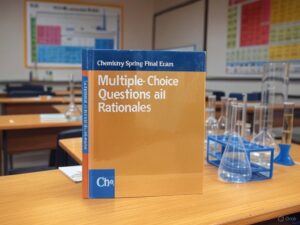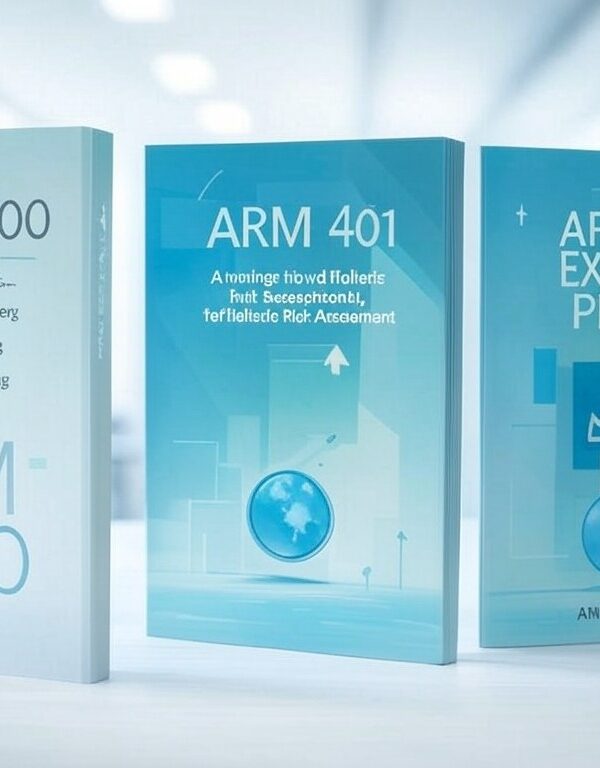Elevate your preparation for the Chemistry Spring Final Exam with this meticulously designed study resource, tailored for high school and college students aiming to excel in their chemistry coursework. This comprehensive tool features a robust collection of multiple-choice questions that span key chemistry topics, including atomic structure, chemical bonding, stoichiometry, thermodynamics, and organic chemistry. Each question is accompanied by detailed rationales, offering clear explanations to deepen understanding, reinforce fundamental concepts, and enhance problem-solving skills. Crafted to align with standard chemistry curricula, this resource integrates real-world applications and evidence-based practices to ensure relevance and effectiveness. It also includes strategic tips for approaching multiple-choice formats, managing exam time, and avoiding common pitfalls. Ideal for students seeking to boost their confidence and achieve top grades, this study aid is an essential companion for mastering the Chemistry Spring Final Exam.
Preview
Reaction Classification Questions
1. Identify the reaction type: H2SO4(aq)+2LiOH(aq)→2H2O(l)+Li2SO4(aq)H_2SO_4(aq)
+ 2LiOH(aq) \rightarrow 2H_2O(l) + Li_2SO_4(aq)
A. Precipitation
B. Acid-Base
C. Gas Evolution
D. Oxidation-Reduction
Correct Answer: B. Acid-Base
Rationale: This is an acid-base reaction because sulfuric acid (H₂SO₄) reacts with lithium
hydroxide (LiOH) to form water and a salt.
2. Identify the reaction type: Mg(s)+Cu(NO3)2(aq)→Mg(NO3)2(aq)+Cu(s)Mg(s) +
Cu(NO_3)_2(aq) \rightarrow Mg(NO_3)_2(aq) + Cu(s)
A. Precipitation
B. Acid-Base
C. Gas Evolution
D. Oxidation-Reduction
Correct Answer: D. Oxidation-Reduction
Rationale: Magnesium (Mg) loses electrons (oxidation), while copper (Cu) gains electrons
(reduction), making this a redox reaction.
3. Identify the reaction type: HCl(aq)+(NH4)2S(aq)→H2S(g)+2NH4Cl(aq)HCl(aq) +
(NH_4)_2S(aq) \rightarrow H_2S(g) + 2NH_4Cl(aq)
A. Precipitation
B. Acid-Base
C. Gas Evolution
D. Oxidation-Reduction
Correct Answer: C. Gas Evolution
Rationale: This reaction produces hydrogen sulfide (H₂S) gas, characteristic of gas
evolution reactions.
4. Identify the reaction type: NaCl(aq)+AgNO3(aq)→AgCl(s)+NaNO3(aq)NaCl(aq) +
AgNO_3(aq) \rightarrow AgCl(s) + NaNO_3(aq)
A. Precipitation
B. Acid-Base
C. Gas Evolution
D. Oxidation-Reduction
Correct Answer: A. Precipitation
Rationale: The formation of an insoluble solid (AgCl) from two aqueous solutions confirms
a precipitation reaction.
1. Identify the reaction type: H2SO4(aq)+2LiOH(aq)→2H2O(l)+Li2SO4(aq)H_2SO_4(aq)
+ 2LiOH(aq) \rightarrow 2H_2O(l) + Li_2SO_4(aq)
A. Precipitation
B. Acid-Base
C. Gas Evolution
D. Oxidation-Reduction
Correct Answer: B. Acid-Base
Rationale: This is an acid-base reaction because sulfuric acid (H₂SO₄) reacts with lithium
hydroxide (LiOH) to form water and a salt.
2. Identify the reaction type: Mg(s)+Cu(NO3)2(aq)→Mg(NO3)2(aq)+Cu(s)Mg(s) +
Cu(NO_3)_2(aq) \rightarrow Mg(NO_3)_2(aq) + Cu(s)
A. Precipitation
B. Acid-Base
C. Gas Evolution
D. Oxidation-Reduction
Correct Answer: D. Oxidation-Reduction
Rationale: Magnesium (Mg) loses electrons (oxidation), while copper (Cu) gains electrons
(reduction), making this a redox reaction.
3. Identify the reaction type: HCl(aq)+(NH4)2S(aq)→H2S(g)+2NH4Cl(aq)HCl(aq) +
(NH_4)_2S(aq) \rightarrow H_2S(g) + 2NH_4Cl(aq)
A. Precipitation
B. Acid-Base
C. Gas Evolution
D. Oxidation-Reduction
Correct Answer: C. Gas Evolution
Rationale: This reaction produces hydrogen sulfide (H₂S) gas, characteristic of gas
evolution reactions.
4. Identify the reaction type: NaCl(aq)+AgNO3(aq)→AgCl(s)+NaNO3(aq)NaCl(aq) +
AgNO_3(aq) \rightarrow AgCl(s) + NaNO_3(aq)
A. Precipitation
B. Acid-Base
C. Gas Evolution
D. Oxidation-Reduction
Correct Answer: A. Precipitation
Rationale: The formation of an insoluble solid (AgCl) from two aqueous solutions confirms
a precipitation reaction.












Reviews
There are no reviews yet.